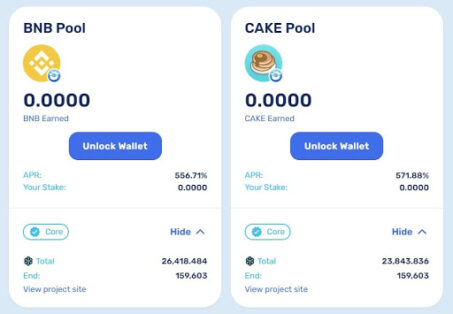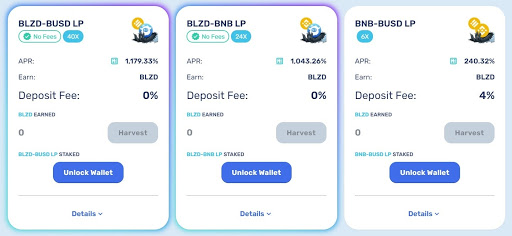Passive income strategies in crypto are evolving with Yield Farming and Staking. No longer do we just HODL forever and wonder when to sell
Yield Farming vs Staking are two entirely different concepts that have different purposes. By participating in DeFi, we can put our crypto to work and be our own bank. We can earn from our crypto and we don’t have to sell it. Whether you just want to HODL (hold) your crypto or swing trading, both options can be profitable while markets are down.
Yield farming focuses on gaining the highest yields possible, while staking focuses on securing the network and earning rewards at the same time.
Read: What is DeFi
Both have advantages and disadvantages, but staking is by far the safest and easiest for the beginner. So that’s where we’ll start.
Staking Your Crypto
Staking is a mechanism derived from the Proof-of-Stake consensus, an alternative to the Proof-of-Work model.
Read: Proof of Work vs Proof of Stake
Traditionally, stakers had to set up a node on their own and join a PoS network to support them as a node validator.
Centralized and decentralized exchanges now offer users the option to stake their assets without having to deal with setting up their own node. The exchange handles the validating, while the staker just provides the assets.
Rewards can be in the same asset staked or another asset but usually not as high as yield farming.
Below we see a staking pool on Blizzard.Money
They make it easy – buy $BLZD – approve it – stake it – earn!

Take some advice from Bleeding Crypto – always do your own research and understand the risks before investing in anything. Follow @BleedingCrypto and sign up for his newsletter.
Read up and DYOR so you too can be excited about $BLZD as I am. https://t.co/2w2B1vSvWY
— Bleeding Crypto (@Bleeding_Crypto) April 6, 2021
Yield Farming for High Returns
Yield farming, also known as liquidity mining, can be challenging to understand the technical aspects even for the most experienced crypto investors. We will stick to the basic advantages and disadvantages for this article. Take a deeper dive on the technicals here.
In order to facilitate trades, decentralized exchanges rely on investors who are willing to lend assets into liquidity pools. When a yield farmer provides liquidity to a DEX like Uniswap they earn a portion of the fees.
Unlike staking, yield farmers provide a pair of tokens that are being traded in the pool and in return they receive a liquidity pool (LP) token that represents their share of the pool.
Impermanent loss happens when you provide liquidity to a pool, and the price of your deposited assets change compared to when you deposited them. Read more here.
Read: Metamask Wallet Safety
Security vulnerabilities are another issue as they can be exploited by ‘hackers.’ If you provide liquidity to a DeFi platform and the project suffers a loss of funds, your funds could be lost forever with no way to recover them.

Deciding on Yield Farming vs Staking
Why not both? Yield farming offers the highest gains and the highest risk while you lend your assets to decentralized exchange pools. While staking helps secure the network and is less risky for lower gains and a little easier with fewer transactions. Determine your experience and level of risk. Your taste for risk should be a determining factor if you are confident in your skills. Start with staking and then move to yield farming if you’re just beginning with DeFi. Don’t put all your eggs in one basket. Spread it around and diversify!















